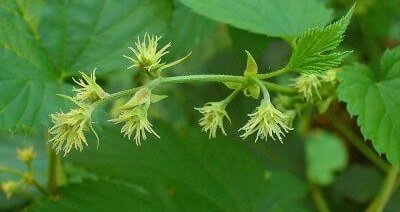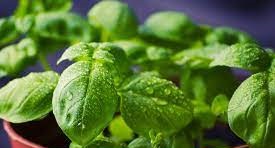What is the homeland of basil? Basil (Ocimum basilicum) is believed to have originated in the tropical regions of Asia, particularly in India and Turkey. It has a long history of cultivation in various parts of the world and has become a staple herb in many cuisines. From its origins, basil has spread to Africa and Europe, as well as other parts of Asia. Today, basil is cultivated in a variety of climates and regions globally.
Different varieties of basil are available, each with its own unique flavor profile and characteristics. While sweet basil is the most widely used variety, there are others, such as Thai basil, lemon basil and holy basil, all of which come from different regions and cultures. Basil’s adaptability to different climates and its popularity in culinary applications have contributed to its widespread cultivation and use around the world.

Growing basil in the United States involves providing the right conditions for its cultivation. Here are some general guidelines for caring for basil:
- Planting Time:
- In most regions, plant basil after the last frost in the spring. Basil is sensitive to cold temperatures, so it’s best to wait until the soil has warmed up.
- Sunlight:
- Basil thrives in full sunlight. Ensure that your basil plants receive at least 6 to 8 hours of direct sunlight per day.
- Soil:
- Plant basil in well-draining soil with a slightly acidic to neutral pH (around 6 to 7). Good drainage is crucial to prevent root rot.
- Watering:
- Keep the soil consistently moist but not waterlogged. Water when the top inch of soil feels dry. Basil does not like to dry out completely.
- Mulching:
- Applying a layer of mulch around the plants can help retain moisture, regulate soil temperature, and reduce weed competition.
- Pruning and Harvesting:
- Regularly pinch or prune the tops of the basil plants to encourage bushier growth. Harvest leaves regularly, and be sure to remove any flower buds promptly to prevent the plant from going to seed. This process, known as “deadheading,” helps the plant focus on leaf production.
- Fertilizing:
- Basil doesn’t require excessive fertilization. You can apply a balanced, all-purpose fertilizer sparingly during the growing season. Too much fertilizer can lead to excessive leafy growth with diminished flavor.
- Pest Control:
- Keep an eye out for pests like aphids and spider mites. Insecticidal soap or neem oil can be used for organic pest control. Companion planting with other herbs or flowers may also help deter pests.
- Disease Prevention:
- Proper spacing, good air circulation, and avoiding overhead watering can help prevent fungal diseases. If you notice any signs of disease, such as yellowing leaves or spots, treat the plants promptly.
- Overwintering (for perennial varieties):
- In warmer climates, basil can sometimes overwinter. Mulch around the base of the plant to help protect the roots from cold temperatures.

Remember that different varieties of basil may have specific care requirements, so it’s a good idea to check the specific recommendations for the variety you are growing. Additionally, local climate variations may influence the care practices that are most suitable for your specific region within the United States.
How often do you water basil UK?
The frequency of watering basil in the UK, as in any other region, depends on several factors such as the weather, soil type, and the specific needs of the plant. Here are some general guidelines for watering basil in the UK:
- Soil Moisture:
- Basil prefers consistently moist but well-draining soil. The soil should not be allowed to dry out completely between waterings.
- Weather Conditions:
- In the UK, the weather can vary, but basil generally benefits from regular watering, especially during dry or hot periods. During the summer, when temperatures are higher, you may need to water more frequently.
- Watering Frequency:
- As a general rule of thumb, water your basil when the top inch of soil feels dry to the touch. Stick your finger into the soil, and if it feels dry at that depth, it’s time to water.
- Morning Watering:
- Watering in the morning is often preferable, as it allows the leaves to dry during the day, reducing the risk of fungal diseases. Avoid watering in the late evening to prevent prolonged leaf wetness overnight.
- Avoid Waterlogging:
- While basil likes consistent moisture, it’s important to avoid waterlogging the soil, as this can lead to root rot. Ensure that the pot or planting bed has good drainage.
- Mulching:
- Applying a layer of mulch around the basil plants can help retain soil moisture, regulate temperature, and reduce weed competition.
- Container Basil:
- If you are growing basil in containers, the soil may dry out more quickly than in the ground. Check container plants more frequently and water when the top of the soil feels dry.
- Adjust to Weather Conditions:
- Be flexible in your watering schedule based on weather conditions. During periods of heavy rain, you may need to water less, while dry spells may require more frequent watering.
Remember that these are general guidelines, and the specific needs of your basil plants may vary based on the local climate, soil conditions, and the size of your plants. Observing your plants and adjusting your watering practices accordingly will help ensure that your basil remains healthy and productive.
